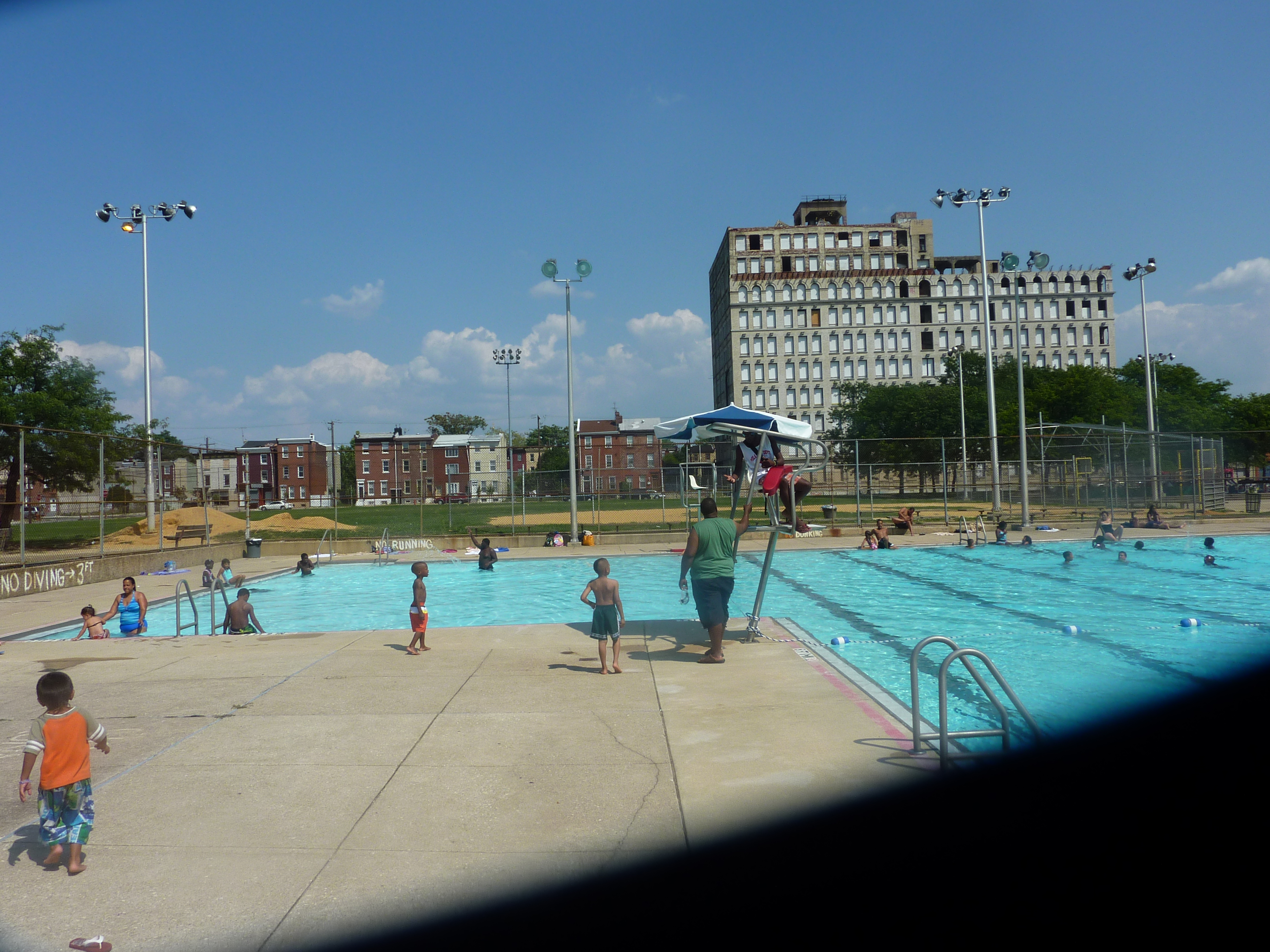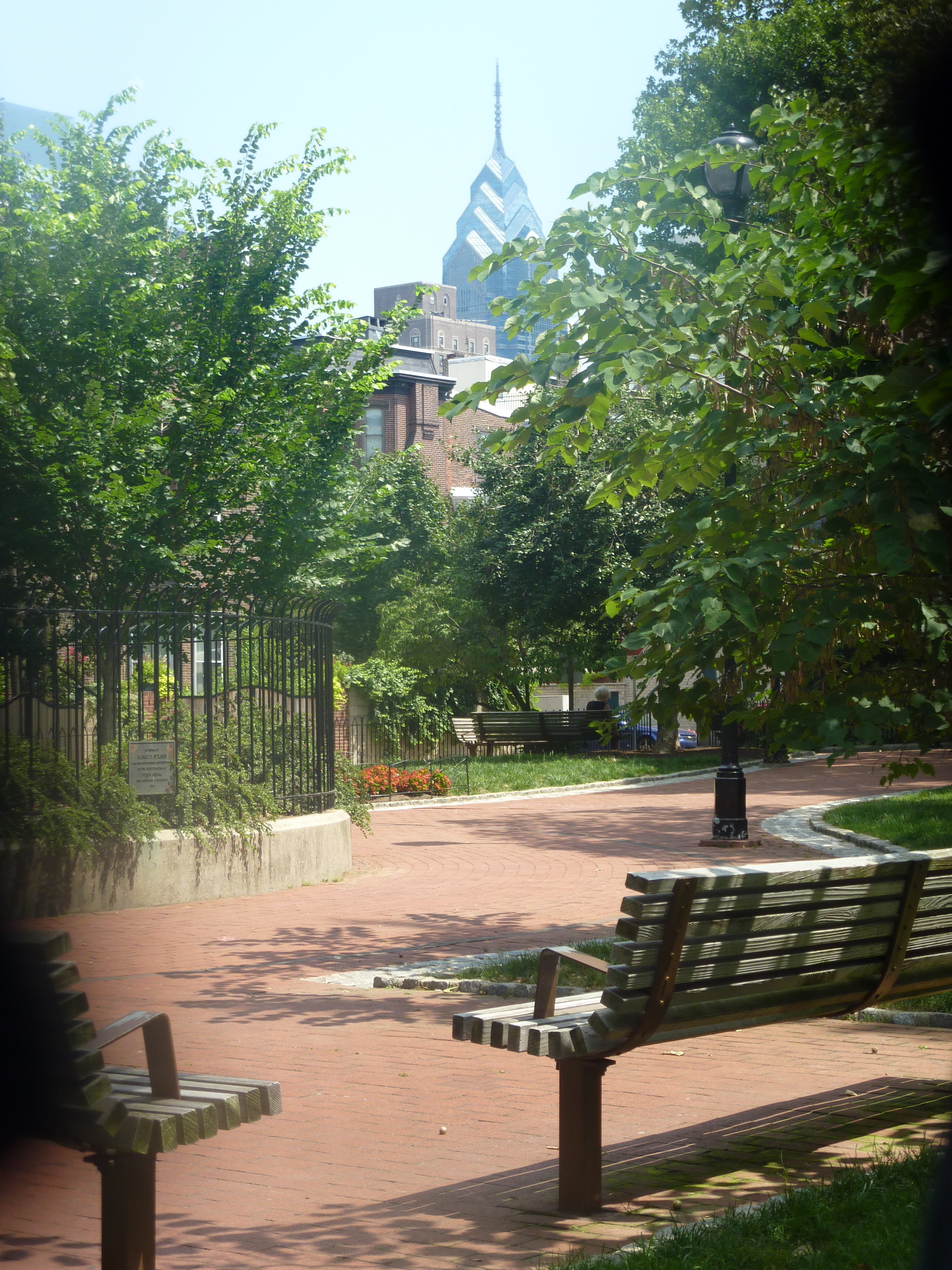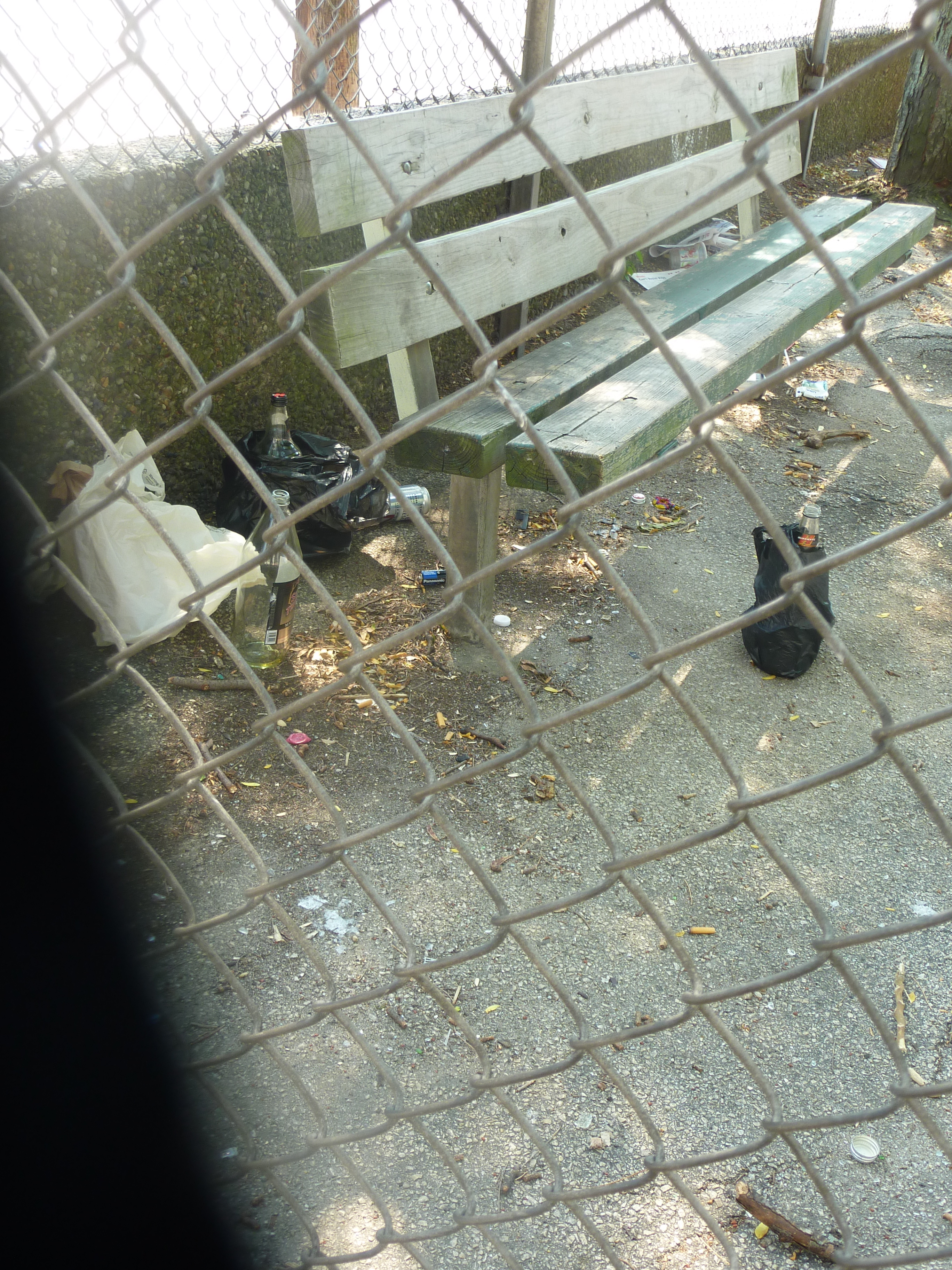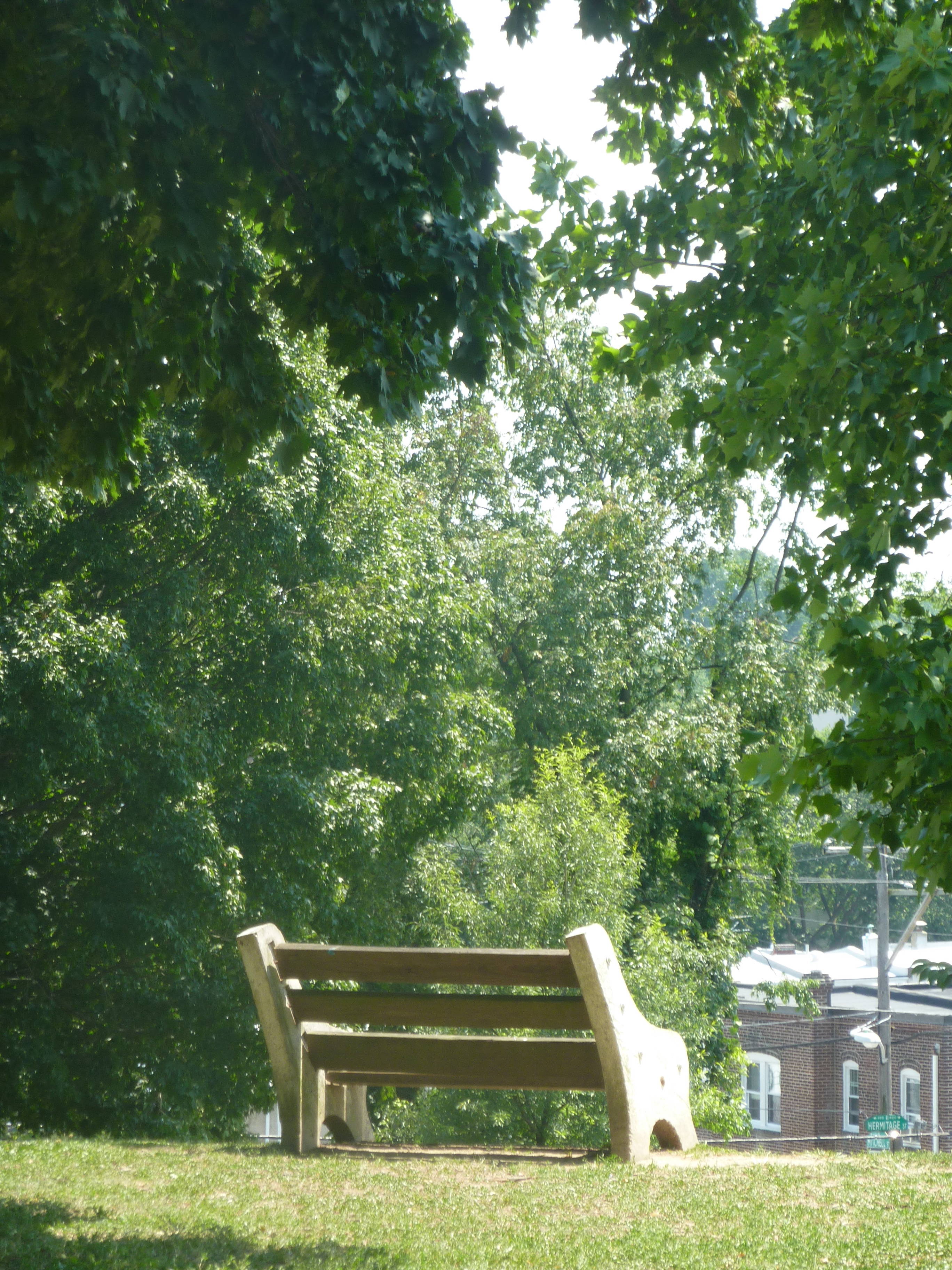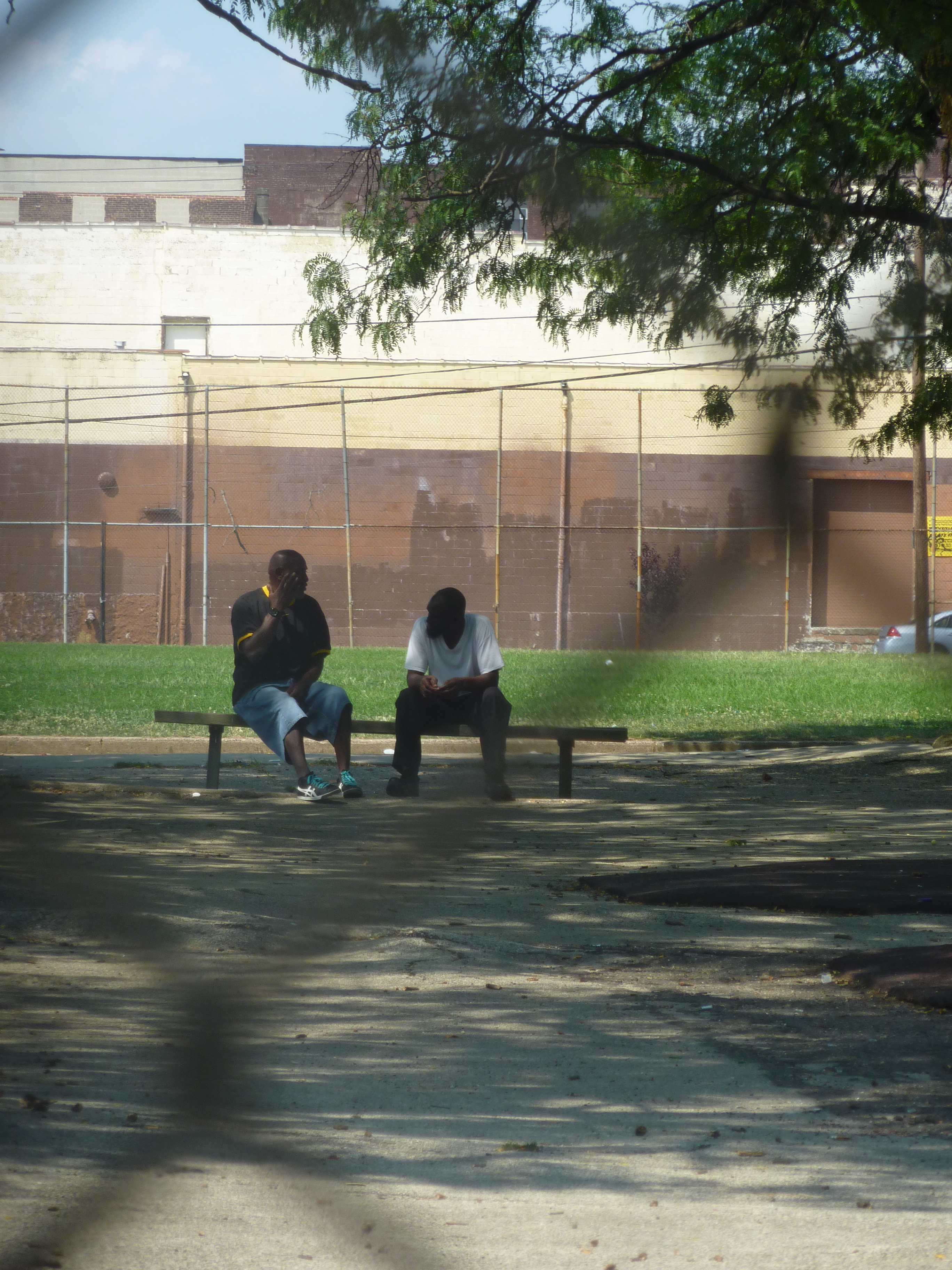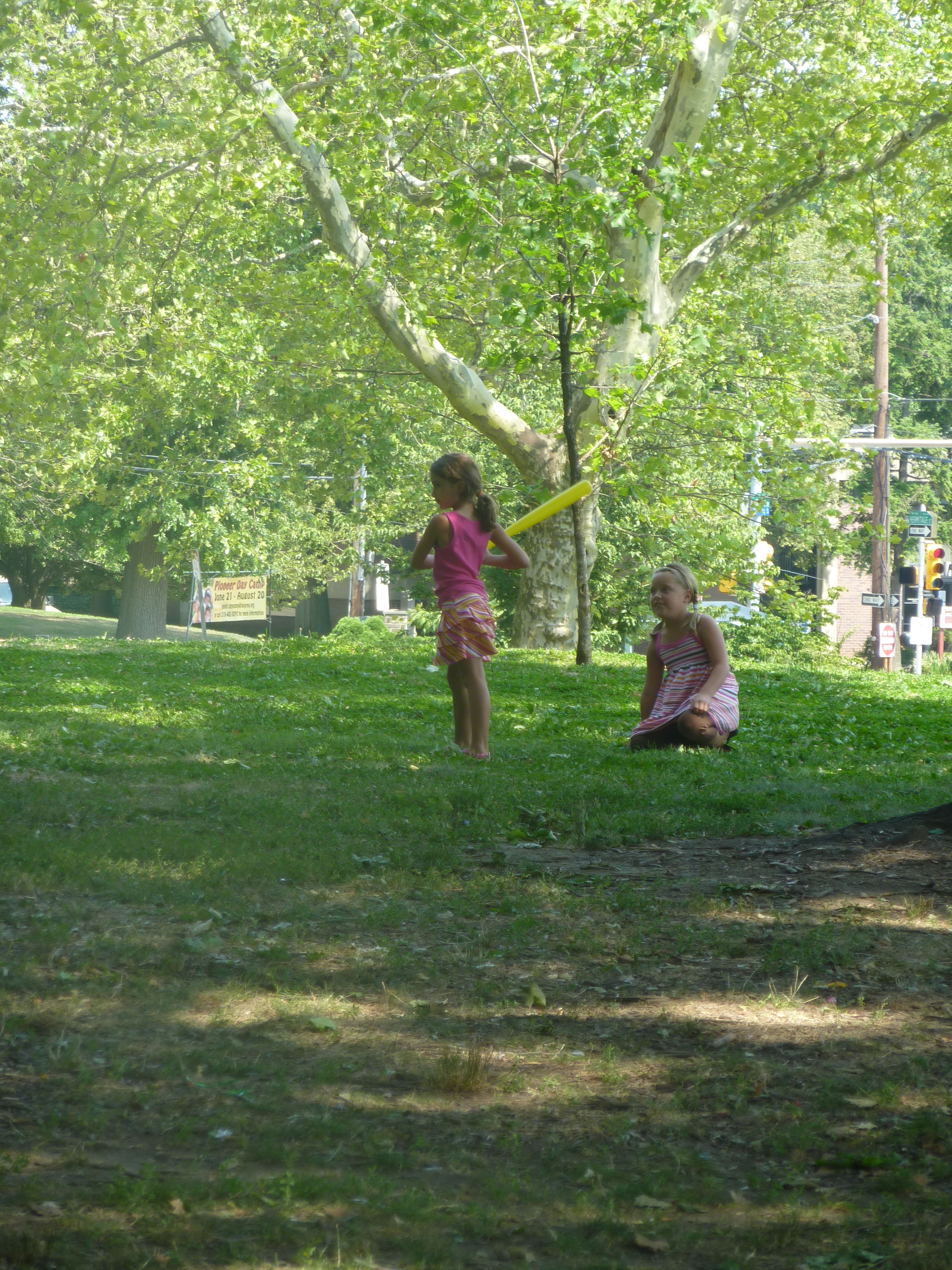Who is minding Philadelphia’s parks?
Last week, the somnolence of a late August morning in Bella Vista was suddenly ravaged by the searing sound of a lawn mower. It was music to the neighbors’ ears, though — made doubly sweet by the smell of freshly-cut grass that had in recent weeks grown knee high in Cianfrani Park.
“Did they find any small children in there?” smirked one neighbor.
Manny Morales, a foreman for M&M Lawn Care, wiped sweat from his brow and powered down his yellow Hustler. Backed by the re-emergence of the tweeting of the birds, he revealed that all over South Philly, people had been coming up to him, bowing in mock gratitude. He had mowed three parks the day before, with so much ground to cover that he had never reached this, his final stop.
His appearance came at a point shortly after one desperate neighbor had even tried to borrow a lawn mower from a nearby recreation center so volunteers could take matters into their own hands. She was told that “union rules” forbade such an exchange.
It was a move typical of life in the city, where park denizens, Friends groups, and, in some cases, Business Improvement Districts, take turns watering flower beds, collecting and storing trash, and painting fences. In this summer of squeezed budgets and excessive heat, though, the question of how our parks and rec centers are faring, and who’s tending to them, seems especially pressing.
“We’ve taken about a four percent cut,” says Patrick Morgan, a spokesperson for Michael DiBerardinis, the Commissioner of the newly-merged Parks and Recreation Department. “So, yes, we did have to cut back on mowing schedules, from every two weeks to every three weeks. It’s possible that in some places it’s gone a little longer, but generally it’s every three weeks.”
Morales wasn’t so sure. “It looks like this hasn’t been done in at least four or five weeks,” he said, pointing to Cianfrani Park’s battered lawn. An employee who picked up the phone at the company’s office in the Northeast confirmed that the city had skipped a cycle with M&M because the “grass wasn’t growing” during the early summer. Subsequent heavy rains had brought about Mother Nature’s taunting response — and thoughts of the old adage about letting the grass grow under one’s feet.
For the City, though, the message remains that staffing hasn’t suffered. “We’re doing our best to minimize service disruptions,” Morgan says.
Indeed Cianfrani Park, like many others, enjoys the help of a part-time Seasonal Maintenance Attendant (SMA), paid for by the City to take care of trash during the spring and summer. That hasn’t changed this year, but it’s never really enough, anyway. The park’s trash cans are constantly overflowing.
Even a full-time SMA can’t keep up with the trash at one of the city’s larger neighborhood green spaces, Clark Park. According to Frank Chance, head of the Friends group, the SMA only gets 25 bags at a time, which just barely covers the weekend. “They refuse to give him more,” he says, noting that the Friends often dig into their own pocket to make up the difference.
Chance adds that the park, which spreads over two blocks and nine acres, has the “good fortune” of being able to turn to the University City District, the local BID. When the grass grew out of control at the park, it was the BID who “hired another company to come in and mow at the end of July,” he says.
Rec centers are more intricately woven into the bureaucracy of the City — for example, several rec center directors and district supervisors refused to comment directly to PlanPhilly for this article — and whatever neighborhood support they have is more ad hoc.
But Susan Slawson, who serves as Recreation Commissioner, part of the Commissioner’s Office, insists that even if hours have to be slightly curtailed or supplies replenished a little less frequently, “the citizens of Philadelphia will not notice many changes in their service.”
Lauren Bornfriend, executive director of the Philadelphia Parks Alliance, praises the “heroic” efforts of city staffers working with tightened resources, but she says more can be done. “The government at some point has to step up its commitment to what is after all a basic amenity,” she says, adding that deferred maintenance will only cost more in the long run. “If you can’t maintain things, what message are you sending?” she asks.
And so PlanPhilly embarked on a leisurely drive to see for ourselves. We started in South Philadelphia, veered toward West Philadelphia, moved into Manayunk, and came back down through North Philadelphia.
At DiSilvestro Playground, 15th and Morris streets, in South Philly, and at the 8th and Diamond Playground in North Philly, the summer swelter had left the basketball courts pretty empty. But trash (if not broken bottles and weeds) was under control and the hoops all contained nets.
At Cruz Recreation Center at 6th and Master in North Philly, three lifeguards stood on duty, watching over the crowds who splashed in a glistening pool. Outside, Yomara Rivera, clad in her bathing suit, walked along a trash-strewn fence to reach the pool. “Everything’s the same,” she confirmed.
Over by the playground, two gentlemen sat by themselves, shooting the breeze. The grass was freshly mowed, the basketball nets were in place. A pile of sand stood ready to freshen up the infield. But trash cans were filled to the brim, and busted glass dotted the playground. “They take pretty good care of this park,” said one.
In posher neighborhoods, amenities seemed plentiful and the bar set higher.
At the Taney Playground in Schuylkill River Park, Kathleen Mulhearn, said she was “disappointed” that a towering totem pole-like fountain hadn’t been turned on this year. But Mulhearn and her two-year-old daughter didn’t have to go far to find water: a nearby arbor had been outfitted with a delightful misting system.
A few blocks away, John Lane, a member of Friends of Fitler Square, sat with a friend on a bench. Was his park hurting? “Not at all,” he declared. “There’s a lot of money put into this park. The fountain is about to be totally renovated.”
At Clark Park, Michelle Gilyard seemed happy. “They keep this park real nice,” she said. “Even when the trees fell down after that big storm in June, they came and picked them up in something like two days!”
And Terri Cristofalo could find little to complain about in the lush setting of Roxborough’s Gorgas Park.. “The trash is a bit yucky now, but that’s because it’s the weekend,” she said. “I’ve been coming here for years and I haven’t noticed any difference. The Friends do a great job.”
Ahhh, the Friends. The fountain repair at Fitler — courtesy of the Friends. The misting devices at Taney — courtesy of the Friends.
And, that prompt removal of the six fallen trees at Clark? The University City District spent $40,000 to get it taken care of, according to Chance. “People assume that it’s the City,” he says, “but although the City would’ve gotten around to clearing the trees, it might have taken three or four months since there was no ‘active’ danger.”
So while park users might not be clear on just who’s fixing what — and while some have lower expectations than others — people like Chance remain skeptical. “When things get taken care of by neighbors and BIDs, it lets the City off the hook,” he says.
“I’m really concerned about what will happen next year,” Chance continues. “That’s when we’ll see the full effect of the cuts kick in.” And after all, even the best of Friends can have their patience tried by their too-needy buddies.
Contact JoAnn Greco at www.joanngreco.com
Check out her new online magazine, TheCityTraveler at www.thecitytraveler.com
WHYY is your source for fact-based, in-depth journalism and information. As a nonprofit organization, we rely on financial support from readers like you. Please give today.



